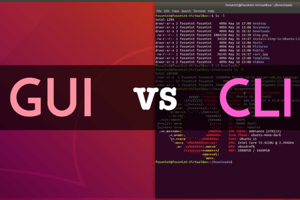Podcast
Questions and Answers
What is the role of cgroups in system administration and containerization?
What is the role of cgroups in system administration and containerization?
- To provide isolated environments for processes
- To limit and distribute resources among different groups of processes (correct)
- To create an isolated view of the system for processes
- To manage security in multi-cloud environments
What is the purpose of namespaces in resource management?
What is the purpose of namespaces in resource management?
- To provide a process with its own file system
- To manage security in hybrid and multi-cloud environments
- To increase complexity in containerization
- To create isolated environments for processes (correct)
How do namespaces contribute to system isolation?
How do namespaces contribute to system isolation?
- By increasing the complexity of containerization
- By limiting and distributing resources among different groups of processes
- By allowing processes to access and affect other processes
- By providing a process with its own network (correct)
What do cgroups and namespaces together provide for resource management and isolation?
What do cgroups and namespaces together provide for resource management and isolation?
What is the purpose of cgroups in Linux?
What is the purpose of cgroups in Linux?
How do namespaces and cgroups differ?
How do namespaces and cgroups differ?
What is the hierarchical structure of cgroups?
What is the hierarchical structure of cgroups?
How are cgroups used in a multitenant environment?
How are cgroups used in a multitenant environment?
Why do containers require very less memory?
Why do containers require very less memory?
How does the lightweight nature of containers affect their size?
How does the lightweight nature of containers affect their size?
Why are virtual machines more secure?
Why are virtual machines more secure?
What makes containers easily scalable horizontally?
What makes containers easily scalable horizontally?
Flashcards are hidden until you start studying
Study Notes
Role of cgroups in System Administration and Containerization
- Cgroups, or control groups, manage and limit system resources allocated to processes.
- They ensure processes can only use specified amounts of CPU, memory, and I/O, enhancing performance and stability.
- In containerization, cgroups prevent one container from consuming all host resources, promoting fair resource distribution.
Purpose of Namespaces in Resource Management
- Namespaces create isolated environments for processes by virtualizing system resources such as user IDs, network interfaces, and file systems.
- They enable multiple instances of applications to run without conflict, each appearing as if they have their own dedicated environment.
Contribution of Namespaces to System Isolation
- By isolating system resources, namespaces enhance security and stability, minimizing risks of interference between applications.
- They help maintain distinct network stacks, process lists, and user identities, crucial for multi-tenant architectures.
Combined Benefits of cgroups and Namespaces
- Together, cgroups and namespaces provide robust resource management and isolation in containerized environments.
- Cgroups limit resource usage while namespaces ensure process isolation, making them essential for lightweight, efficient application deployment.
Purpose of cgroups in Linux
- Cgroups manage resource allocation for processes, preventing resource exhaustion and ensuring system responsiveness.
- They allow system administrators to prioritize resource allocation among different processes or user groups.
Differences Between Namespaces and cgroups
- Namespaces focus on isolating resources for processes to run independently.
- Cgroups concentrate on managing and limiting resource usage among groups of processes.
Hierarchical Structure of cgroups
- Cgroups feature a hierarchical structure where processes can belong to different groups, each with specific resource limits.
- This hierarchy enables flexible resource allocation tailored to various needs and priorities.
cgroups in a Multitenant Environment
- In multitenant architectures, cgroups ensure fair resource sharing among multiple users and applications.
- They help prevent resource exhaustion from one tenant affecting others, maintaining overall system performance.
Memory Efficiency of Containers
- Containers require significantly less memory compared to traditional virtual machines due to shared operating system kernels.
- Their ability to run applications just-in-time and utilize existing libraries minimizes memory footprint.
Impact of Containers' Lightweight Nature on Size
- The minimal structure of containers results in smaller image sizes, which leads to quicker deployment and startup times.
- Lightweight nature promotes ease of replication and scaling in cloud environments.
Security Advantages of Virtual Machines
- Virtual machines provide stronger security due to complete isolation from the host operating system through hypervisors.
- They can run entirely different operating systems, providing an additional layer of security against vulnerabilities.
Scalability of Containers
- Containers are easily scalable horizontally due to their lightweight design, allowing rapid deployment of additional instances as demand increases.
- Orchestration tools streamline the process, making scaling efficient and manageable.
Studying That Suits You
Use AI to generate personalized quizzes and flashcards to suit your learning preferences.




